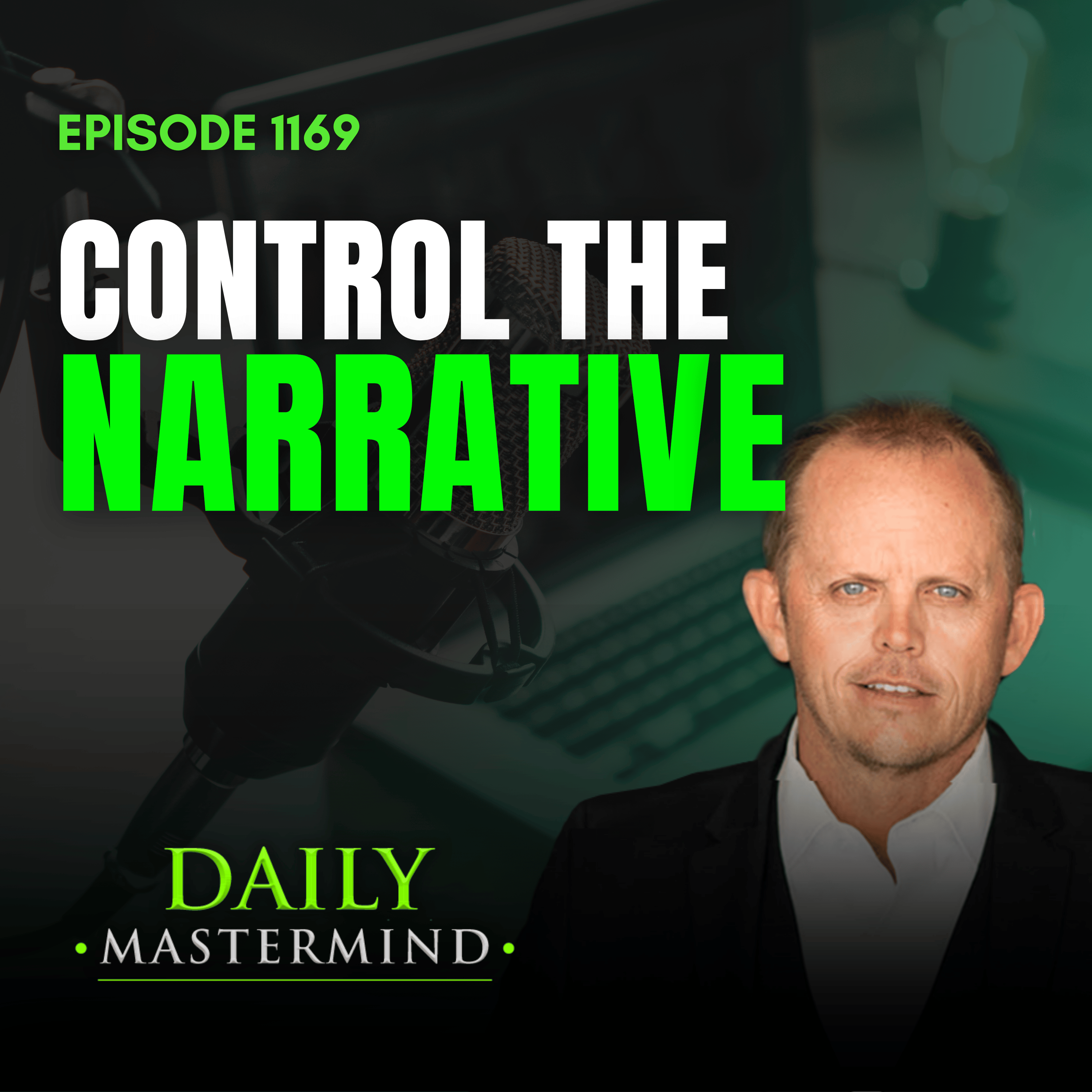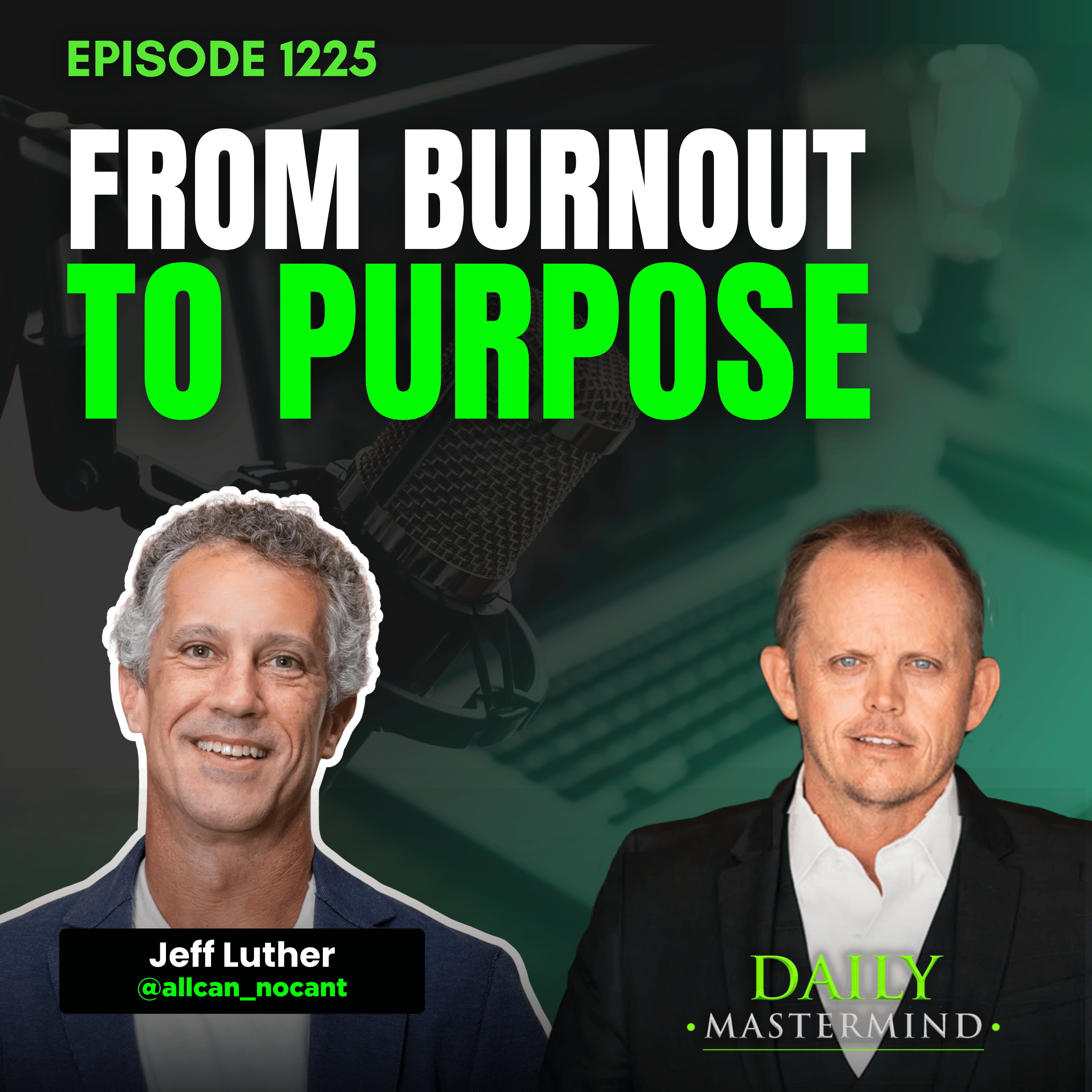
How to Own Your Reputation Before Someone Else Does
In this episode, George Wright III emphasizes the importance of shaping and controlling your personal and professional reputation. He discusses why authority acts as the new currency in today's business world and provides a comprehensive framework for owning your narrative before someone else does. Key steps include auditing your current online presence, creating a clear and compelling brand story, identifying your ideal client, building authority assets, and consistently publishing relevant content. George also highlights the importance of actively managing your ongoing story to maintain and protect your digital identity.
How to Own Your Reputation Before Someone Else Does
Here’s the reality: your reputation is being shaped right now, whether you’re paying attention or not. And if you’re not controlling the narrative, somebody else will—and they may not tell the story you want. In today’s business environment, personal branding has never been more important. The more intentional you are about how you present yourself, the more opportunities you will attract. You’ll build stronger trust with your clients and be less vulnerable to misrepresentation.
I’ve been building global brands for 30 years, and I can’t tell you how many times I’ve Googled a client’s name only to find results they wish weren’t there—negative press, bad business deals, or outdated content. If you haven’t built a solid online foundation, it’s nearly impossible to control your brand and your story.
Early in my career, I heard a quote that stuck with me: If you don’t define your brand, someone else will—and they might not get it right. In today’s marketplace, silence is not neutral. It creates a vacuum, and in that vacuum, you risk becoming invisible—or worse, having your authority hijacked.
Auditing Your Current Reputation
The first step in controlling your narrative is to audit your online reputation. Google yourself and see what comes up on the first two pages of search results. Review your LinkedIn, your social media profiles, and any other public platforms.
Ask trusted partners and peers: “What’s the first impression you get from my online presence? What do you know about me based solely on what you see online?” This isn’t about ego—it’s about establishing a baseline.
When I work with clients, I take them through our Authority Scorecard at Authority Media Network. It’s a set of ten questions designed to measure your level of awareness and authority. Because you can’t improve what you don’t know, you must first identify exactly where you stand.
Crafting Your Core Brand Story
Once you’ve established your baseline, it’s time to create your core brand story. This is the foundation for every piece of communication you put into the world. Too many entrepreneurs are doing interviews, publishing books, or launching products without ever defining the story that ties everything together.
Your brand story should answer four essential questions: Who are you? Who do you serve? What do you do? And what separates you from your competition? It should also set clear expectations for the results people can expect when they work with you.
A compelling brand story typically has three parts:
Origin: Where you came from—your background, your challenges, and the path that led you to where you are now.
Transformation: The turning point or experience that qualified you as an expert or positioned you as a leader in your space.
Destination: Where you are today and how you help others achieve their goals.
When I interview guests, I always start with their background. This isn’t just about curiosity; it’s about establishing credibility. Your audience wants to know where you came from and why they should trust you. Once your story is in place, it becomes the filter for every piece of content you create, from your website to your social media posts.
Identifying and Targeting Your Ideal Client
The next step is identifying your ideal client with absolute clarity. No matter where you’re speaking or publishing content, you need your message to cut through the noise and reach the right people. Defining your ideal client allows you to tailor your message directly to the individuals most likely to engage and buy from you.
You should be able to clearly articulate the problem you solve for them and the specific solution you offer. This requires scripting your message so that it flows naturally and consistently, no matter the setting. I’ve seen brilliant experts fumble through explanations of what they do, losing impact in the process. If it’s worth communicating, it’s worth refining and practicing until it’s second nature.
Building and Showcasing Authority Assets
Once you’ve audited your reputation, clarified your story, and targeted your ideal client, the next step is building authority assets that establish you as the go-to expert in your space. This isn’t just about producing random content—it’s about creating high-impact proof that reinforces your credibility.
Authority assets can include thought-leadership articles, podcast appearances, keynote speaking clips, professional testimonials, case studies, and media features. They serve as digital proof that you are who you say you are, and they work for you 24/7 to build trust before you even meet a prospect.
In today’s digital landscape, identity theft and brand hijacking are real threats. Public figures like Joe Rogan have warned about their likeness and voice being used without permission. By proactively creating and distributing authority content, you make it harder for others to misrepresent you and easier for your audience to verify your authenticity.
Consistency and Automation in Content Publishing
Owning the first few pages of Google and showing up in AI-driven searches requires one thing above all else—consistent publishing. Regularly releasing blogs, press releases, articles, and videos reinforces your message and ensures your name stays relevant in the algorithms that shape public perception.
Thanks to AI automation, this process doesn’t have to consume your life. For example, one well-planned video interview can be transformed into a long-form YouTube video, a podcast episode, a published article, and a series of short-form social media clips. With the right system, you can invest a single hour per week and still reach millions of people.
The key is ensuring that every time someone searches your name, the top 10 results are exactly what you want them to see—your best work, your strongest messaging, and the clearest proof of your expertise.
Actively Managing Your Ongoing Story
The final—and often overlooked—step in controlling your narrative is actively managing your story over time. Your brand isn’t a one-time project; it’s a living, evolving asset that needs continuous attention.
This means consistently monitoring your mentions, search results, and media coverage. If misinformation or outdated content appears, you’ll be able to address it before it shapes perception. Treat your reputation like a high-value investment—protect it, nurture it, and make sure it’s working to bring you measurable returns.
Set up Google Alerts, track social media mentions, and review your search presence monthly. Doing so ensures you’re not blindsided by narratives forming without your input.
Conclusion: The Power of a Strong Narrative
In today’s fast-moving business world, people form opinions about you before they ever meet you—often within seconds of a Google search or LinkedIn glance. A strong, intentional narrative builds trust, attracts more opportunities, and shields you from damaging misinformation.
When you control your narrative, you move from being a reactive participant in the market to a proactive leader in your space. You gain speed of trust, meaning prospects and partners enter conversations already believing in your credibility. This shortens sales cycles, increases conversions, and boosts your lifetime client value.
If you haven’t already, start with a reputation audit, refine your story, target your ideal audience, create strong authority assets, publish consistently, and manage your online presence like the asset it is. Your brand is your most valuable currency—protect it, invest in it, and let it compound your efforts over time.
And remember: it’s never too late to start building the life and business you’re meant to have—but you must take action now.
.png)
About George Wright III:
George Wright is a Proven, Successful Entrepreneur- and he knows how to inspire entrepreneurs, companies, and individuals to achieve Massive Results. With more than 20 years of Executive Management experience and 25 years of Direct Marketing and Sales experience, George is responsible for starting and building several successful multimillion-dollar companies. He started at a very young age to network and build his experience and knowledge of what it takes to become a driven and well-known entrepreneur. George built a multi-million-dollar seminar business, promoting some of the biggest stars and brands in the world. He has accelerated the success and cash flow in each of his ventures through his network of resources and results driven strategies. George is now dedicated to teaching and sharing his Prosperity Principles and Strategies to every Driven and Passionate Entrepreneur he meets. His mission is to Empower Entrepreneurs Globally to create Massive Change and LIVE their Ultimate Destiny.
Get to know me:
1. Subscribe to The Daily Mastermind Podcast- daily inspiration, motivation, education
2. Follow me on social media Facebook | Instagram | LinkedIn | TikTok | YouTube
3. Get the Prosperity Pillars Poster I Developed over 20 years from my Mentors.
Work with me:
My mission is to help you Master Your Mind, Money, & Business, and I firmly believe:
It’s never too late to create the life you were meant to live…a LIFESTYLE of health, wealth, and happiness.

.png)

.png)
.png)